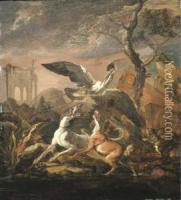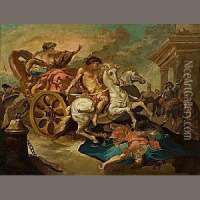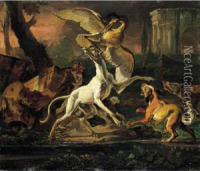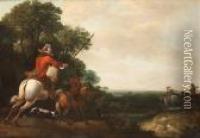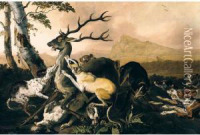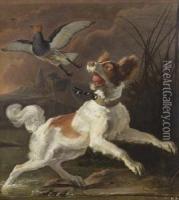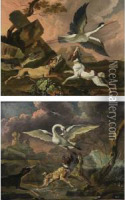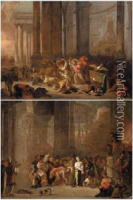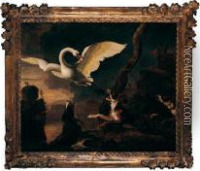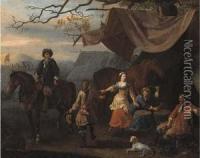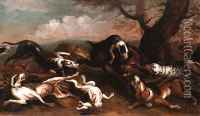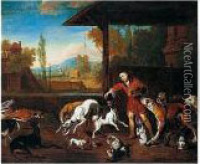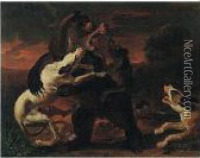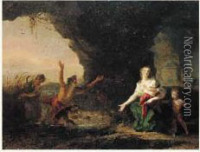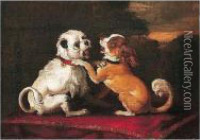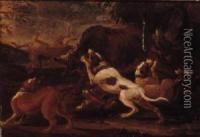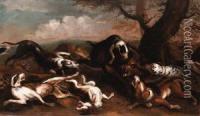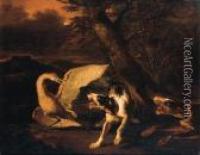Abraham Hondius Paintings
Abraham Hondius was a Dutch Golden Age painter known for his dynamic hunting scenes, landscapes, and animal paintings. Born around 1625 in Rotterdam, Netherlands, Hondius's early life is relatively undocumented, but it is believed he was a pupil of Cornelis Saftleven, a Dutch painter of animals and landscapes. Hondius's work reflects a strong influence from Saftleven, as well as from other contemporary Dutch artists and the Flemish Baroque tradition.
Hondius's career began in Rotterdam, but by 1659 he had moved to London, England, where he would spend the remainder of his life. His decision to relocate may have been influenced by the increasing competition and saturated art market in the Netherlands. In London, he found a more receptive audience for his work and was able to establish himself as a successful artist.
In England, Hondius continued to produce paintings that depicted hunting scenes, which were particularly popular with the English aristocracy. His works often featured dramatic compositions with lively representations of both the hunters and the hunted. Aside from hunting scenes, Hondius also painted genre scenes, portraits, and historical subjects.
Hondius's style is noted for its energetic brushwork and strong use of color. He excelled at capturing the movement and drama of the hunt, an ability that made his paintings stand out and garnered a significant following. Despite his success, little is known about his personal life, and his profile remained relatively low in comparison to some of his contemporaries.
Abraham Hondius's paintings are part of various collections in museums and galleries, and his work has been studied for its contribution to the Baroque period and its reflection of 17th-century English cultural interests. He passed away in London in 1691, leaving behind a body of work that continues to be appreciated for its vivid portrayal of Baroque-era life and leisure activities.
